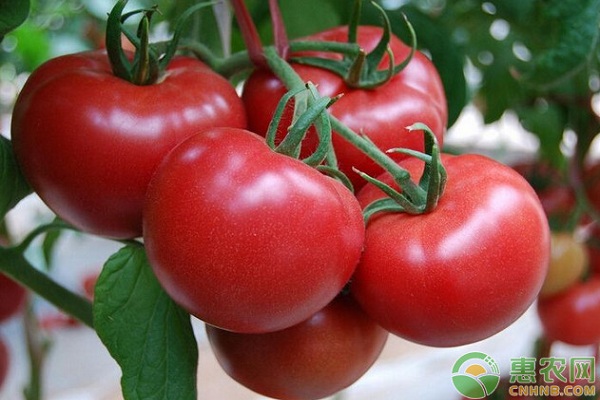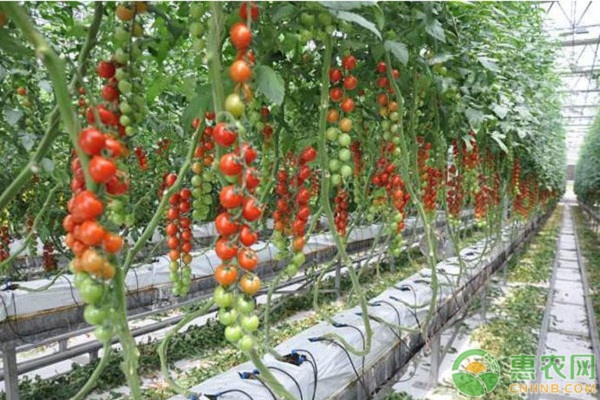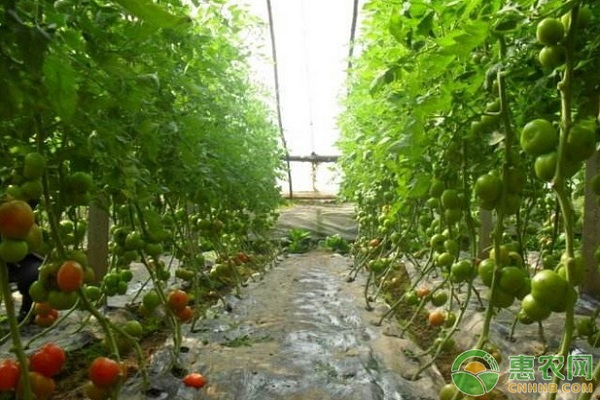High-efficiency cultivation model test of greenhouse tomato and cowpea in Heze City
In China, many regions are now implementing the intercropping model. This model is designed to prevent crop varieties from being planted in a single way, and can be used for a variety of different types of vegetables, fruits, and intercropping. Let's learn what we are doing in the three-year autumn delay tomato and early spring cowpea production in Heze City, Shandong Province. The economic benefits are remarkable and are welcomed by the growers.

1 èŒ¬å£ arrangement
Tomatoes in autumn and winter, seedlings in early August, planted in early September, harvested in December of that year; in early February, the cowpeas were broadcast live in the middle of the tomato, harvested in the middle and late April.
2 autumn and winter 茬 tomato cultivation points
2.1 Variety selection
Choose Rising Dabao, which is precocious, cold-resistant, disease-resistant, with high rate of achievement, hard flesh, or Huifu, a disease-resistant variety that is resistant to high temperature during seedling period.
2.2 Sowing
Seed treatment before sowing, firstly soak the seeds in 50 °C warm water for 30 min, stirring constantly; then soaking with formalin (40% formaldehyde) 100 times for 10-15 minutes to kill the pathogens on the surface of the seeds After rinsing, it is immersed in water for 5h, and germinated at 25~27°C; about 5% of the seeds start to root at 1-2 days, and treated at 0°C for 12~16h, which promotes the uniformity of seedlings and promotes early maturity for management. The treated seeds are sown in the prepared nutrient bowl.
2.3 Cultivate strong seedlings
The seedling stage is a period in which flower bud differentiation and seedling vegetative growth are simultaneously carried out, and the quality of the seedling determines the late tomato yield. Mainly to control the temperature, 25 ~ 30 ° C during the day, preferably not more than 35 ° C, 20 ~ 25 ° C at night, due to the higher temperature in this period, mainly to cool down, generally put 2 layers of shade net on the nursery shed, set the water Curtain to prevent seedlings from growing. Because the nutrient soil, fertilizer and bottom water for seedlings are sufficient, it is generally not watered and fertilized during the nursery period. If necessary, spray 2000mg/L chlormequat to control the seedlings and grow strong seedlings.
2.4 Colonization
1 preparation
In July, the whole field was shackled, and 5000kg of chicken manure, 50kg of ternary compound fertilizer, 50kg of superphosphate, 100kg of biological fertilizer per 667m2, and various trace elements, 30cm deep. The film is dry and swelled for 10 to 15 days, the temperature is 55-60 ° C, mainly killing the pathogen on the soil surface and the wall inside the shed, the air; then the wet shack, that is, after the dry shack, the irrigation shack is 10 to 15 days. The ground temperature below the surface reaches 50-60 ° C, mainly killing root knot nematodes, grass seeds, pathogens and the like in the soil.
2 colonization
In the first ten days of September, the ridges were planted, the line spacing was 80cm, and the row spacing was 60cm. The plants were planted at a distance of 40~45 cm. Colonization requires 3 to 4 leaves of the seedlings, the stems are thick, the leaves are dark green and not long, no pests and diseases, and the seedling age is 32 to 40 days. After planting, the seedling water, soil cover, and mulch film are planted, and 2200-2500 plants are planted per 667 m2.

2.5 Field Management
1 colonization to pre-flowering management
a. Water management. Planting for about 7 days, according to the growth of the seedlings, watering the seedlings until the head of the fruit is walnuts, pouring water once. If this period is particularly dry, you can pour 1~2 times of water according to the situation, and try to water less to prevent high temperature. High humidity, causing plants to grow.
b. Temperature management. The external temperature in this period is 20~30°C, which is still higher than the suitable temperature of tomato.
c. Pest management. Due to the high temperature, it is mainly used to prevent and control viral diseases and virus-transmitting pests such as aphids and whitefly. Prevention and treatment of viral diseases, spraying Ningnanmycin, virus A, etc. after slow seedlings, once every 5 days, even spraying 3 to 4 times; prevention and control of virus-borne pests such as aphids and whitefly, and upper and lower vents should cover insect-proof nets, The greenhouse is hanged with 30 to 50 sheets/667m2 of yellow wormwood, which can be combined with imidacloprid and acetamiprid.
2 flowering period management
This period is longer, from early October to late March.
a. Water and fertilizer management. During the flowering period, the phosphorus, calcium and boron fertilizers were sprayed to increase the flowering quantity and the flower quality. In the end, the potassium dihydrogen phosphate solution was sprayed 3 to 4 times; as the temperature gradually decreased in this period, the watering principle was small water pouring, each time Watering should be applied with high nitrogen and high potassium compound fertilizer 15~25kg/667m2.
b. Plant management. After planting, vines are hanged in time, flowers are open for about 20 days, artificially assisted pollination, pruning (single stalks), and 5 spikes are topped. When the first ear is turned red, all the leaves below the ears are beaten. Drop and increase ventilation.
c. Temperature management. The temperature gradually decreased, and the straw curtain was insulated at the beginning of November, 23 to 25 ° C during the day and 15 ° C at night; from the top of the plant to the end of the harvest, 25 to 28 ° C during the day and 15 ° C during the night.
d. Pest management. The main pests are whitefly, whitefly, aphids, leaf miners, and cotton bollworms. Aphids, whitefly, and whitefly can be trapped by yellow plate, spray 25% Aketai (thiamethoxam) emulsifiable concentrate 3,000 times liquid; leaf miner sprays spotted net prevention and control; cotton bollworm sprays DuPont Kangkuan ( 20% chlorantraniliprole suspending agent) control. The main diseases include late blight, gray mold and bacterial diseases. Late blight can be sprayed with 75% dakonin (chlorothalonil) suspension 600 times liquid, etc.; gray mold can spray 50% of the agricultural spirit ( Ethylene nucleus) wettable powder 600 times liquid, 50% Huiyou (froxonitrile) wettable powder 5000 times liquid control; bacterial disease can be used 10% Shigao (phenylene ether bixazole) water dispersion granules 800 times Liquid control.
2.6 Harvesting
Due to the low temperature of the ripening period of the tomato, the early fruit color change is slower, and the early market can be harvested when the tomato is reddish.
3 early spring cowpea points
3.1 Variety selection
Choose green champions and green willows that are strong, precocious, cold-resistant and disease-resistant.
3.2 Sowing
At the beginning of February of the next year, the seeds were soaked in warm water of 40 °C for 2 hours. Most of the seeds swelled and swelled. When a few kinds of skins shrunk, they were planted in the middle of the tomato. Three to four seeds per hole were planted and watered and covered.
3.3 Field Management
1 pre-management
That is, sowing to tomato, from early February to late March, about 50 days, temperature and water management with tomato (see 2.52 flowering period management); plant management, timely hanging vines, up to 2.3 ~ 2.5m when topping .
2 post management
That is, after the autumn and winter, the tomatoes are pulled. Temperature management, due to the high temperature of cowpea, the external temperature is 23 ~ 28 ° C, proper insulation, 30 ° C during the day, 20 ° C at night. Water and fertilizer management, proper water control in the early stage, in order to prevent the plant from growing, when the cowpea grows to 10cm, it can be applied with water 10kg/667m2, 7 to 10 days.
3 major pest control
Soybean meal can be sprayed with 10% imidacloprid wettable powder 2000-3000 times liquid, 5% of fusin (cis-fenvalerate) emulsifiable concentrate 3000-4000 times liquid; red spider can spray 73% gram of emulsifiable concentrate 2000 times Liquid, 15% sputum (anthrone) emulsifiable concentrate 2500 times solution, 10% Liuyangmycin emulsifiable concentrate 1000-1500 times solution; rust can spray 25% powder rust (triazolone) wettable powder 12000 times solution, 50% 800-1000 times solution of rusting emulsifiable concentrate.

3.4 Harvesting
12 to 16 days after flowering, the pods gradually become thicker and the color becomes lighter. At this time, the quality and volume of the pods reach the maximum, which is the best period for harvesting; timely harvest according to local consumption habits.
4 Economic Benefit Analysis
Through intercropping, make full use of light and heat resources, and greatly improve the economic benefits per unit area of ​​the greenhouse. In the three-year planting experiment, the average yield of tomato is 6000 kg/667m2, the wholesale price is 4 yuan/kg, the income of 667m2 is 24,000 yuan; the output of cowpea 667m2 is 3500kg, the average price is 3.6 yuan/kg, 667m2 The income is 12,600 yuan; the greenhouse film cost per 667m2 is 1,500 yuan, the steel structure depreciation cost is 1200 yuan, the rope cost is 100 yuan, the film cost is 100 yuan, the base fertilizer cost is 1400 yuan, the fertilizer cost is 400 yuan, the cultivated land cost is 100 yuan, and the labor cost is 1200 yuan. , a total of 6,000 yuan per 667m2. The model has a net benefit of 306,600 yuan per 667m2.
Author: Zhang Guirong Ding Tianjian
China Extract Powder For Use As Dietary Supplement Extract Powder, Extract Powder Manufacturer
Shaanxi Kang New Pharmaceutical co., Ltd. , https://www.bodybuildingoil.com